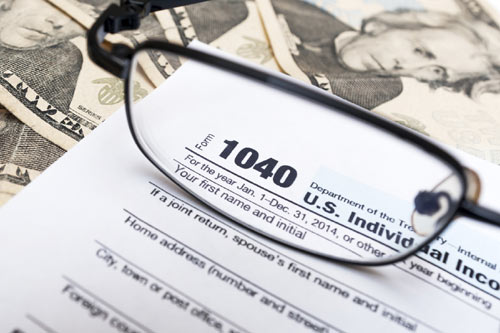
As the tax filing deadline passed in mid-April, the
Since this pattern is similar year after year, we can accurately predict that the average refund-receiving taxpayer, by April, has already banked about a
But there is a better way: Fix your withholding so you get more of your money when you earn it. If you love the idea of "forced savings," you should know that you don't have to rely on the
Try this one-two punch:
- First, file a new W-4 with your employer claiming extra withholding allowances (we'll explain the details below). That will cut the amount of taxes taken out of your checks each payday.
- Second, ask your payroll office to direct deposit the amount of your do-it-yourself pay raise to a savings account. (If your employer can't split your direct deposit among different accounts, ask your bank to set up regular transfers between your check and savings accounts.)
If you regularly get an average-sized refund, this will steer about
There are a couple of advantages to getting the
How to do it
The amount of income tax withheld for the
Ah, but how do you know how many allowances to claim? Worksheets that come with the W-4 will help, and you can get detailed instructions in
But there's an easier way. If your 2015 financial situation is likely to be similar to 2014's, take advantage of Kiplinger's Easy-to-Use Tax Withholding Calculator. We've updated the calculator for 2015. Answer three simple questions (you'll find the answers on your 2014 tax forms), and we'll estimate how many additional allowances you deserve. We'll even show you how much your take-home pay will rise starting next payday.
Your goal is to match withholding as closely as possible with what you'll actually owe for 2015. The
Our quick-and-easy method is a helpful guide, not gospel. As noted, it's based on the assumption that your financial life hasn't changed dramatically. If you have a new baby, get a new job or have an adult child who qualified as a dependent in 2014 but won't in 2015, for example, the calculator won't reflect how such events will affect your tax bill.
But for most Americans, our calculator will paint a reliable picture. That, in turn, should accomplish two important goals:
1) Get you motivated to grab a W-4 to pinpoint how many extra allowances you should claim; and
2) Get you more of your money as you earn it.
Comment by clicking here.
Kevin McCormally is Editorial Director at Kiplinger Washington Editors.



 Contact The Editor
Contact The Editor
 Articles By This Author
Articles By This Author